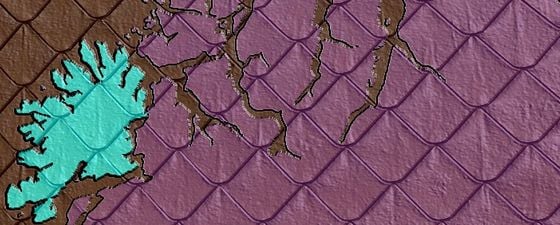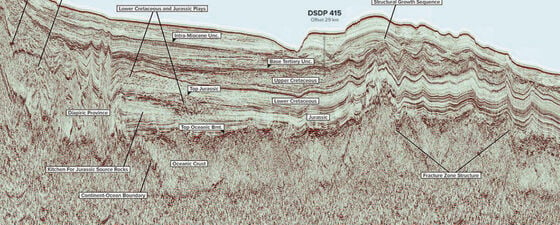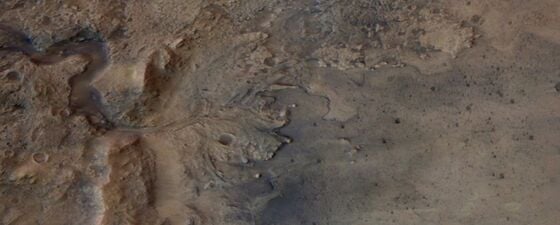With majestic mountain peaks and your own private beach to greet the midnight sun, scenic Senja, often referred to as a miniature Norway, is a hidden treasure for geotourists and adventurers.
Steep, dramatic mountains dive into the sea, and fiords, beautiful white, coral sand beaches and a lovely archipelago surround the island. Along with this dramatic scenery, Senja also offers you peaceful landscapes with valleys and woods, small farms and friendly fishing villages. The variety in landscapes makes it possible to go skiing in the mountains and take a bath in the sea, all within a few hours.
The island of Senja is a Norway in miniature and offers spectacular scenery and experiences. Steep, dramatic mountains dive into the sea, like here at Okstindan, also known as the ‘Devils row of teeth’. (Photo: Morten Smelro)
Window to a Crustal World
In addition to attractions such as Senjatrollet, the world’s largest troll according to the Guinness Book of World Records, and rustic fishing communities, the geology is also a reason to visit Senja. The changes in the terrain on the island are controlled by the type of rocks, as different bedrock types have different hardness and therefore ability to resist erosion by ice and water. The northern and western coasts face out to open ocean and mountains plunge nearly vertically into the sea, while the eastern side has considerably flatter, gentler terrain.
The western and northern parts of Senja are parts of the West Troms Basement Complex (WTBC) and are composed of mainly Palaeoproterozoic granite and granodiorite, which has been metamorphosed to varying degrees to create gneiss. The WTBC forms a part of the Fennoscandian Shield and is separated from the Caledonian nappes in the south-east by a combination of a basal Caledonian, low angle thrust fault and a system of post-Caledonian faults. The Caledonian rocks to the east of the faults are mainly metamorphic rocks that were sedimentary in origin, mostly schists, and meta-sandstones.
With many good exposures of metamorphic rocks with igneous origins as well as igneous rocks in the west, and a series of rocks which are predominantly metamorphic from sedimentary origins to the east, Senja is an excellent location to study how the difference in the origin of a metamorphic rock can change its characteristics.
Exposures of graniodiorite at Trælen, on the north-western part of Senja. (Photo: Morten Smelror)
Nickel, Hydro-Power and High-Tech Graphite
Geotourists coming to Senja should visit the historical site of Senjens Nickelworks, a former mining plant, which was in operation for 14 years (1872-1886) at Hamn, and where there is now a cultural heritage centre. The nickel-works were built and operated by Vivian & Sons, a Welsh company, after Eilert Brox found nickel ore at his farm in 1869. For a few years, this was one of Norway’s largest and most modern mining works, with mostly 430 workers employed.
Almost all of the workers were immigrants, mostly Swedes. As usual with mining, the company built up a whole community from scratch. There were more than 50 buildings, which in addition to construction buildings included housing for workers and engineers, shops, churches, schools, bakeries and prisons. A water-powered electricity plant was built for the mining operation in 1882, coming into operation at the same time as the Edison Electric Illuminating Company in Manhattan in New York. The plant generated 6.5 kW and the energy was used only for lighting. This was the first hydroelectric power plant in Europe and possibly in the world.
When it became clear that the operation could no longer continue the company left, taking the dismantled machines, equipment and other assets with them. However, in a concentrated area near the mine there are still many remnants of the buildings, including walls house, a smokehouse and melting house, residential buildings and a railway line. You can stop to study the mine or spot remains of the nickel deposits left at the disposals.
Information board at the historical site of Senjens Nickelworks. (Photo: Morten Smelror)
The nickel mine at Hamn. (Photo: Morten Smelror)
Samples of the nickel-bearing deposits at Hamn. (Photo: Morten Smelror)
If you choose to head out to the scenic pearl of Bøvær in north-west Senja on your journey, you will pass an industrial area with the operating buildings and port of Skaland Graphite Works, one of few graphite works in Europe. The deposit was first described by the pioneer of Norwegian geology, Baltazar Mathias Keilhaug, in 1861. Recent surveys show that there is large-scale graphite mineralisation in the area. More than 125,000 tons of ore have been proven, and geophysical anomalies suggest tonnages up to 500,000 tons. Around 6,000 tons are exported yearly to the European industry. There is an increasing demand for high-quality graphite, to be used in batteries, fuel-cells, cables, laptop computers and other high-tech instruments, and the goal is to reach 10,000 tons though increased production from new mines.
Walks and Midnight Adventures
Every year many tourists visit the famous Lofoten islands to explore their beautiful scenery and wildlife. However, why not try visiting the less crowded, second largest, Norwegian island as well? Senja is just as exciting and beautiful as Lofoten, and as a bonus, you can find your own quiet beach and wander in the wild with no one else around. Senja has a lot to offer whether you go there in the summer or the winter season. In the summer the sun is up day and night, allowing midnight hiking in the mountains, or yeu can go fishing either in the sea or in a mountain lake. In the winter, the northern lights, the Aurora borealis, is there to create magic.
Ånderdalen National Park on Senja displays the coastal nature of northern Norway with its mountains and fiord landscape, along with primeval forests of pinus sylvestris, some trees over 500 years old. The vegetation on the granite ground is meagre, consisting of approximately 200 species of vascular plants like the bog asphodel, coralroot orchid and different species of Eriophorum. Among the 90 species of hatching birds, you will find the common crane, Eurasian curlew, whooper swan and horned grebe. In the lakes and rivers, there are trout and arctic char ready for catching, but remember to buy a fishing license. Moose, red fox, mountain hare, stoat and otter are commonly seen. The park is easily accessible, with good paths, while the steeper mountains are more demanding. In addition to varied bedrock, geologists will enjoy glacial features such as u-shaped, hanging valleys, large moraines, and deltas made by rivers running from glaciers that once covered the island.
Senja is perfect for outdoor life whether you like a challenge or not. For anyone who wants to do hiking, paddling, diving or freeriding down steep hills, Senja is an Eldorado, and mountain climbers and beach lovers will also have a good time here. There are numerous opportunities to explore nature.
View from Hamn towards the open Norwegian Sea in the west. (Photo: Morten Smelror)
00:00 o’clock and the midnight sun is shining on Trælen and the strandflat in front of the mountain. (Photo: Berit Løkken)
Nesting cormorants at Hamn enjoying the midnight sun. (Photo: Berit Løkken)
Being an island in the northern part of Norway, fishing has always been an important part of the life and culture of the nearly 8,000 inhabitants. The Norwegian Sea outside Senja has rich and well-known fishing grounds like Klakkan, Grimsbakken, Stordjupta and Mulegga. Commercial fishing and aquaculture are still essential economic bases to this area. Museums like Hofsøya Bygdemuseum and Kveitmuseet (Halibut Museum) in Skrolsvik present the life and history of the fisheries.
Trolls and the Devil’s Teeth
Another facet of Senja’s cultural heritage is storytelling. Two of the better-known stories are Senjatrollet, the story about the troll operating on both land and sea, and Mannen i Ausa, which explains how Ausa Mountain got its ‘face’ and ‘eyes’. The hard life in the old days is often reflected in the stories.
The golden sanitary house at Ersfjordstranda; one of several unique facilities along the National Tourist Route between Gryllefjord and Botnhamn. (Photo: Morten Smelror)
Senja is part of the project Norwegian Scenic Routes. This is an important project in Norway and aims to ensure the high visual quality of scenic viewpoints and picnic areas along these routes. Architects, landscape architects and visual artists have all been part of this project and an arts curator has been appointed to ensure that works of art are part of the Norwegian Scenic Route experience.
The National Tourist Route on Senja, which is called the ‘gem’ of all the routes in Norway, runs from Gryllefjord in the west to Botnhamn in the north. It is a journey through a constantly changing landscape. At Bergsbotn there is a viewing platform that lifts you above the magnificent surroundings, facing Bergsfjorden and the ocean in the background. The narrow and winding road goes through a stunning and dramatic landscape. Tungeneset provides a walkway in Siberian larch leading over the rocks to provide a view of the razor-sharp Okshornan – often referred to as ‘the devils’ row of teeth’. At Ersfjordstranda beach with white sand surrounded by tall, craggy peaks are spectacular. The big, golden toilet-facility here is an attraction in its right element! And don’t miss Husøy island, a small fishing village where the oldest houses are stayed with wires to withstand the fierce winds.
Viewpoint at Bergsbotn along the national tourist road, where a platform constructed in wood and steel offers a breathtaking panorama opening out to Bergsfjord and open ocean beyond. (Photo: Morten Smelror)
As well as from driving there by car, Senja is easy accessible by the coastal steamer to the nearest town Finnsnes; you can bring the car with you on the ship if you want. Going by plane to Tromsø, known as the ‘Paris of the Nordic countries’, is a good alternative. Spend some time in this vivid city, before going to Senja; is only a few hours drive from Tromsø and Senja.
Early June at Kaperdalen in the middle of Senja, and there is still snow on the mountains and ice on the lakes. (Photo: Morten Smelror)





